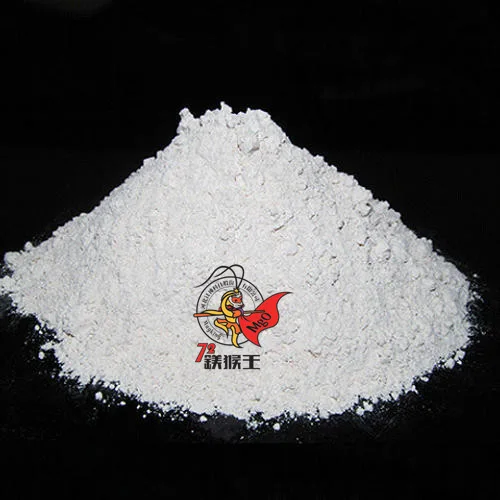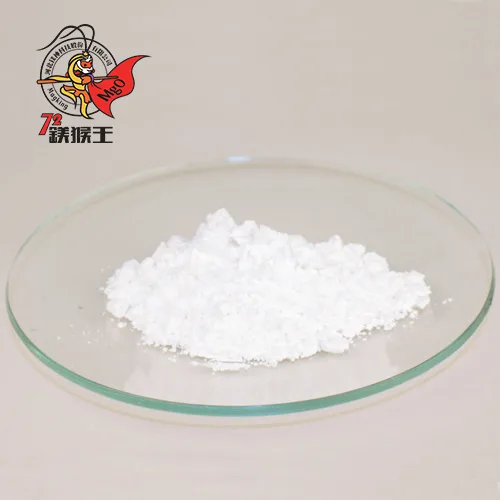Flame retardants play a crucial role in enhancing fire resistance across various industries, from construction to electronics. Among them, magnesium oxide (MgO) stands out as an environmentally friendly and highly effective inorganic flame retardant. With a high melting point and stable thermal properties, MgO provides excellent fire resistance without the toxic emissions associated with traditional halogen-based retardants. This article explores the flame retardant mechanisms of magnesium oxide, its key applications, and the advantages it offers over conventional alternatives.
Flame Retardant Mechanism of Magnesium Oxide
Magnesium oxide operates through multiple flame retardant mechanisms, including endothermic decomposition, the formation of a protective layer, and chemical inhibition of combustion.
Endothermic Decomposition
One of the primary flame retardant mechanisms of MgO is its ability to absorb heat during decomposition. When exposed to high temperatures, magnesium hydroxide (Mg(OH)₂), a common precursor to MgO, undergoes thermal decomposition:
Mg(OH)2→MgO+H2O
This reaction absorbs a significant amount of heat, reducing the temperature of the material and slowing down the combustion process. The release of water vapor further dilutes flammable gases, decreasing the likelihood of sustained burning.
Formation of Protective Layer
Magnesium oxide contributes to fire resistance by forming a stable, high-temperature-resistant protective layer on the material’s surface. This layer acts as a barrier that:
- Prevents oxygen from reaching the underlying material
- Reduces heat transfer to the combustible substrate
- Minimizes the release of flammable decomposition products
By stabilizing the surface, MgO helps maintain the structural integrity of the material and prolongs resistance to fire exposure.
Chemical Inhibition
Magnesium oxide also plays a role in chemically inhibiting combustion. When heated, it interacts with combustion byproducts and promotes char formation, which further impedes flame spread. Additionally, MgO can neutralize acidic and corrosive gases that are often produced during the burning of polymers, thereby improving fire safety and material durability.
Main Application Areas
Magnesium oxide’s flame retardant properties make it a valuable additive in various industries. Below are some of its key application areas.
Polymer Materials
In the rubber and plastics industries, MgO is widely used to enhance fire resistance in products such as:
- Flame-retardant coatings for electrical cables
- Polyurethane foams used in furniture and insulation
- Rubber compounds for automotive and industrial applications
Unlike halogen-based flame retardants, magnesium oxide provides effective fire suppression without generating toxic fumes, making it ideal for indoor and consumer applications.
Building Materials
Magnesium oxide is a key component in fire-resistant construction materials, including:
- MgO boards, which are used as alternatives to drywall for their superior fire resistance and moisture resistance
- Cement composites, where MgO improves thermal stability and reduces flammability
- Coatings and paints, enhancing the fire safety of building structures
MgO’s durability and high-temperature stability make it a reliable choice for improving fire safety in residential and commercial buildings.
New Energy Fields
With the rise of renewable energy and electric vehicles, MgO has found applications in:
- Battery casings and separators, where it helps mitigate the risk of thermal runaway
- Insulation materials for solar panels and wind turbines, improving fire resistance in harsh environments
As energy storage technologies advance, the demand for safe, flame-retardant materials like magnesium oxide continues to grow.
Textiles
The textile industry is increasingly adopting magnesium oxide-based flame retardants to improve the fire resistance of fabrics used in:
- Protective clothing for firefighters and industrial workers
- Home furnishings such as curtains and upholstery
- Aviation and automotive interiors
By integrating MgO into fabric coatings and fiber treatments, manufacturers can produce fire-resistant textiles that meet stringent safety regulations.
The Core Advantages of Magnesium Oxide as a Flame Retardant
High Efficiency and Environmental Protection
Unlike traditional flame retardants that rely on toxic halogens, magnesium oxide is a safe, non-toxic, and eco-friendly alternative. It does not release harmful gases during combustion, making it an ideal choice for sustainable fire protection.
High Temperature Resistance
With a melting point exceeding 2800°C, MgO remains stable at extreme temperatures. This property ensures long-lasting fire resistance, making it suitable for high-performance applications in aerospace, construction, and industrial settings.
Multifunctional Synergy
Magnesium oxide works synergistically with other flame retardants, enhancing overall fire resistance. It can be combined with:
- Aluminum hydroxide (ATH) and magnesium hydroxide (MH) for enhanced heat absorption
- Phosphorus-based retardants to improve char formation and reduce flammability
- Silicate-based additives to reinforce protective barriers
This versatility allows manufacturers to optimize flame-retardant formulations for specific applications.
Economic Efficiency
Compared to other high-performance flame retardants, MgO offers cost advantages due to its natural abundance and straightforward processing. Its long-term stability and durability also reduce maintenance and replacement costs in fire-resistant materials. Choosing a high-quality magnesium oxide manufacturer can make you more cost-effective
Conclusion
Magnesium oxide is an effective, environmentally friendly flame retardant with applications across multiple industries. Its ability to absorb heat, form protective layers, and chemically inhibit combustion makes it a valuable alternative to traditional halogen-based retardants. With advantages such as high-temperature resistance, multifunctional synergy, and cost efficiency, MgO continues to gain prominence in fire-resistant materials. As industries increasingly prioritize sustainability and safety, magnesium oxide is poised to play a crucial role in the future of flame retardant technology.
FAQs
How does magnesium oxide compare to traditional halogen-based flame retardants?
Magnesium oxide is a safer, non-toxic alternative to halogen-based flame retardants. It does not release harmful gases or toxic smoke, making it environmentally friendly and suitable for indoor applications.
Can magnesium oxide be used in combination with other flame retardants?
Yes, MgO works synergistically with other flame retardants like aluminum hydroxide, phosphorus-based compounds, and silicates to enhance overall fire resistance and material performance.
What industries benefit the most from magnesium oxide flame retardants?
Industries such as construction, automotive, textiles, and energy storage benefit from MgO’s high-temperature stability, non-toxicity, and durability in fire-resistant applications.



